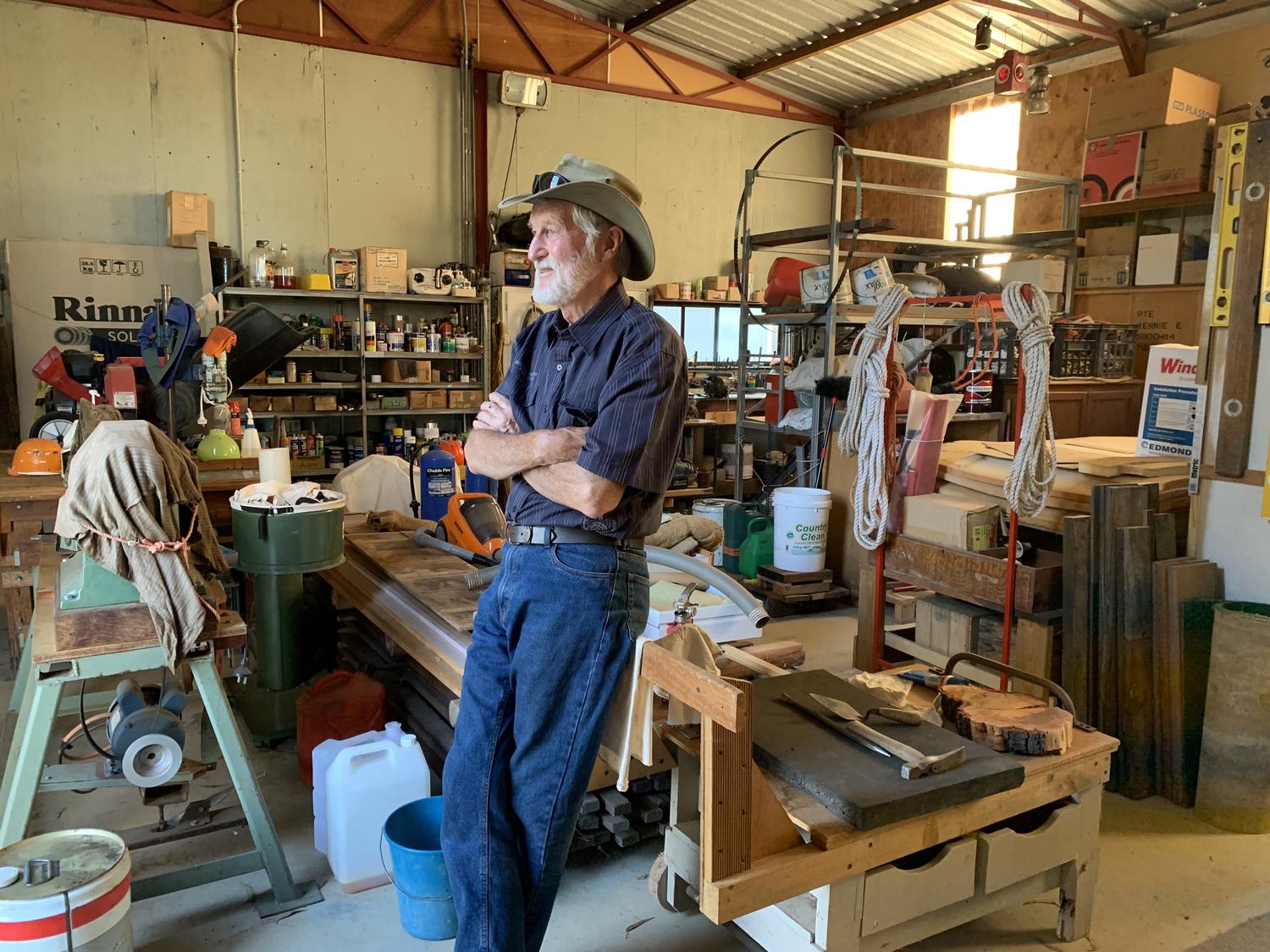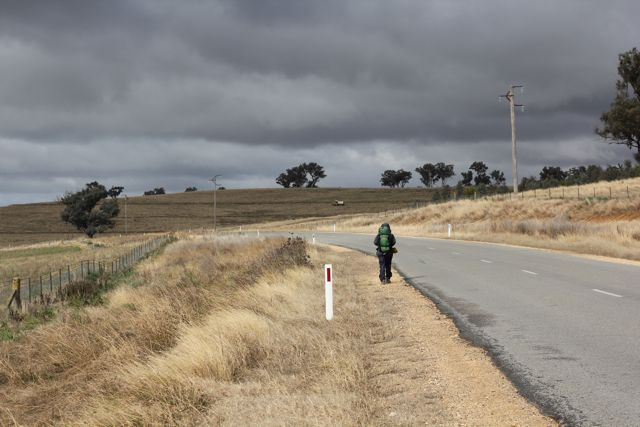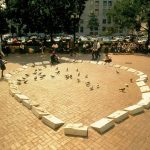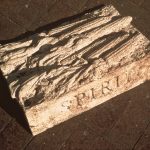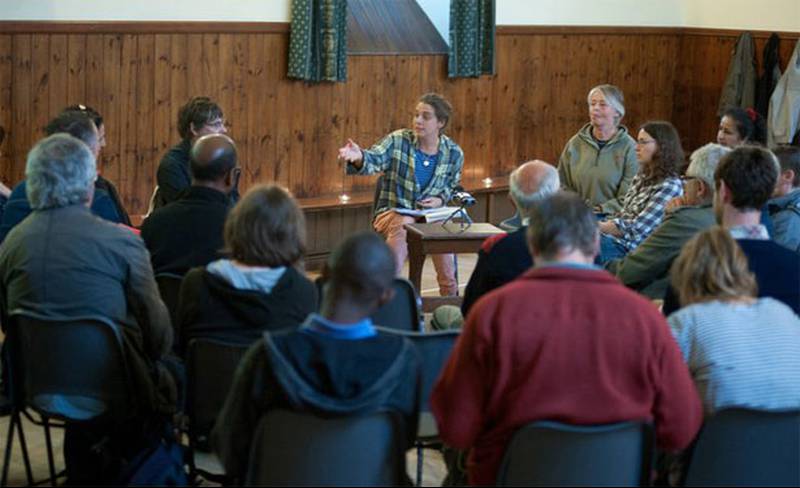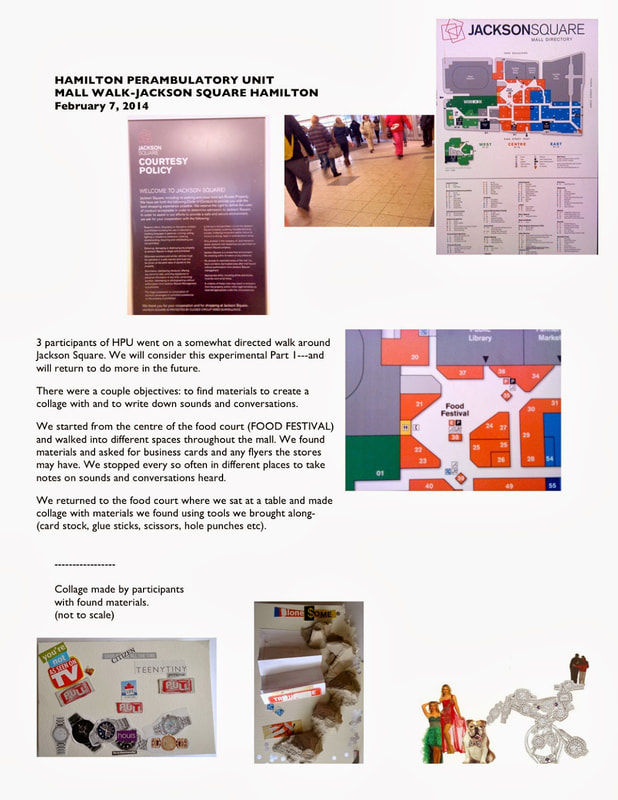(credit)

In the summer of 2001 on the Makwa Sahgaiehcan Indian Reserve in the northern reaches of Saskatchewan, a woman was running, reenacting running done two generations earlier by Cistemaw inyiniw, a Cree man who delivered tobacco from community to community to ask for their attendance and support at ceremonies. He was part of the Moccasin Telegraph: a runner, a traveler, and a messenger. Cistemaw inyiniw (whose name is Cree for tobacco being) walked or ran even when horses were available to him. People were amazed at the distances he could cover and how he traversed them so quickly. Cistemaw inyiniw’s grandson, Harry Blackbird, recalls that “[h]e could cross all the rivers in the region without seeming to get wet.”
Wearing a racing jersey with a number (distinguishing her as a member of a formal event), Cheryl L’Hirondelle ran from one end of the reserve to the other (approximately twenty-five kilometers) on the main road through the community. In most places, her action went by unnoticed, but on the reserve—as in most small communities—everyone knows what everyone else is doing. During L’Hirondelle’s performance, and inspired by her action, some women in the community began a Moccasin Telegraph of their own by phoning other people on the reserve and notifying them about the event.
Aware of what normally constitutes the art audience, certainly not the people from Makwa Sahgaiehcan, L’Hirondelle’s goal was to involve another kind of viewer. Engaging this other audience, as it is with all art that seeks to resonate with a particular community, required her to negotiate a new set of rules and develop a different set of cultural strategies. In some pre-performance musings she remarked that “the activity has to somehow engage people instead of alienate them…it has to occur where people live and where performance has survived for many years—in people’s camps, homes and at the kitchen table.” Her task of “engag[ing] people instead of alienat[ing] them” was determined from the outset. Her strategy was to stage the performance in the local, engaging the community by performing a part of their history.

Cistemaw inyiniw’s story was handed down to L’Hirondelle in typical Native tradition, orally. In Native culture, stories are not simply stories. They are told and retold so that they resonate in the present, not as myths and legends, but as a vital part of history. They teach critical lessons and cultural values, like bravery and the necessity of communication. By mimicking Cistemaw inyiniw’s running, L’Hirondelle’s performance highlighted the distinctions and pointed to the ambiguities of what constitutes public, community, and audience. The Elder originally telling the story has a captive audience: they are members of the given community. However, in L’Hirondelle’s performance the audience is not so easily located. In some cases the term itself is challenged (when does a passer-by become part of an audience?), its definition moves out of focus and its location shifts.
Audience is commonly defined as the assembled spectators or listeners at an event. In L’Hirondelle’s action the viewers were not formally assembled; the performance was happenstance and informal. This questions the distinction between audience and public. Are the people in the community an audience simply because they witness the event? Or, do they have to somehow engage with the action to gain meaning from its occurrence? Can one be called an audience if they refuse to be involved and ultimately disregard the action? Possibly the public are those who choose (for whatever reason) not to be involved with the work. The audience could then be further distinguished as those who gain meaning from the event.

As L’Hirondelle ran through the community of Makwa Sahgaiehcan, a film crew captured her performance and the performances of three other people, Louise Halfe, Cheli Nighttraveller, and Joseph Naytowhow, who, on consultation with the artist, also interacted with the community. Each performer was given a disposable camera, a list of Cree syllabics, and chalk. They were encouraged to write messages in syllabics wherever they saw fit. The performers were also encouraged to ask the people they visited if they would still be willing to honor the age-old tradition of never turning a stranger from your door but, rather, inviting that person in and giving them food and drink. This is based on the Elders’ belief that you never know how far someone has traveled. If the person still abided by this tradition, “water” was inscribed in syllabics on the outside of the house. During her run, Cheryl stopped at two houses where she saw syllabics denoting “water” and visited with the people inside.

Each additional performer interacted with the community in a separate way. Joseph Naytowhow recited the story in typical Cree tradition by becoming the spirit of Cistemaw inyiniw. He offered tobacco to the people he visited and alerted them to Cheryl’s action. Louise Halfe chose to do a photo essay in addition to informing the community about the performance and recording their opinions of the action. Cheli Nighttraveller visited the home of an elderly man in the nearby community of Loon Lake and documented her visit with photographs.
During L’Hirondelle’s performance, three radio stations, Flying Dust Radio, MBC, and CJNS, broadcasted the story of Cistemaw inyiniw in Cree as told by Harry Blackbird. While Flying Dust Radio is broadcasted to the reserve, MBC and CJNS are stations that play mainly Top 40 hits. The idea of a Cree story interrupting the regular streams of Shania Twain and 50 Cent is subversive in itself.
Each component of the performance—L’Hirondelle’s running, the visits with the members of the community, and the radio broadcasts—extended public reception of the event. The visits with the community informed people of the performance, broadening her audience; the radio broadcasts ensured that the community had access to the original story; and L’Hirondelle’s action physically inscribed Cistemaw inyiniw’s story in the landscape of northern Saskatchewan.

The term “public art” doesn’t resonate with most Native people. After all, they do not make up a large percentage of the museum audience. They certainly aren’t viewed as constituting the public or even one of the more carefully defined “publics.” Rather, they are part of a community. Will the community of Makwa Sahgaiehcan remember L’Hirondelle’s performance as a great moment of contemporary Native public art? Probably not. However, it will resonate in the minds of those who witnessed it as an honorable act.”
